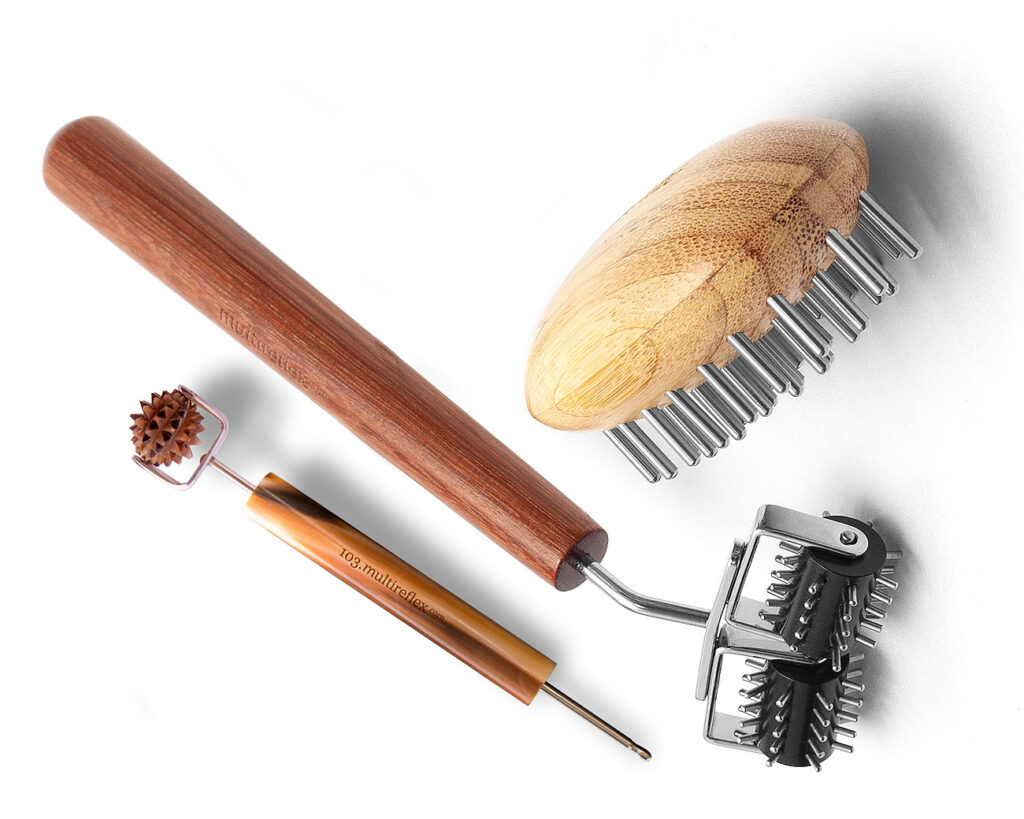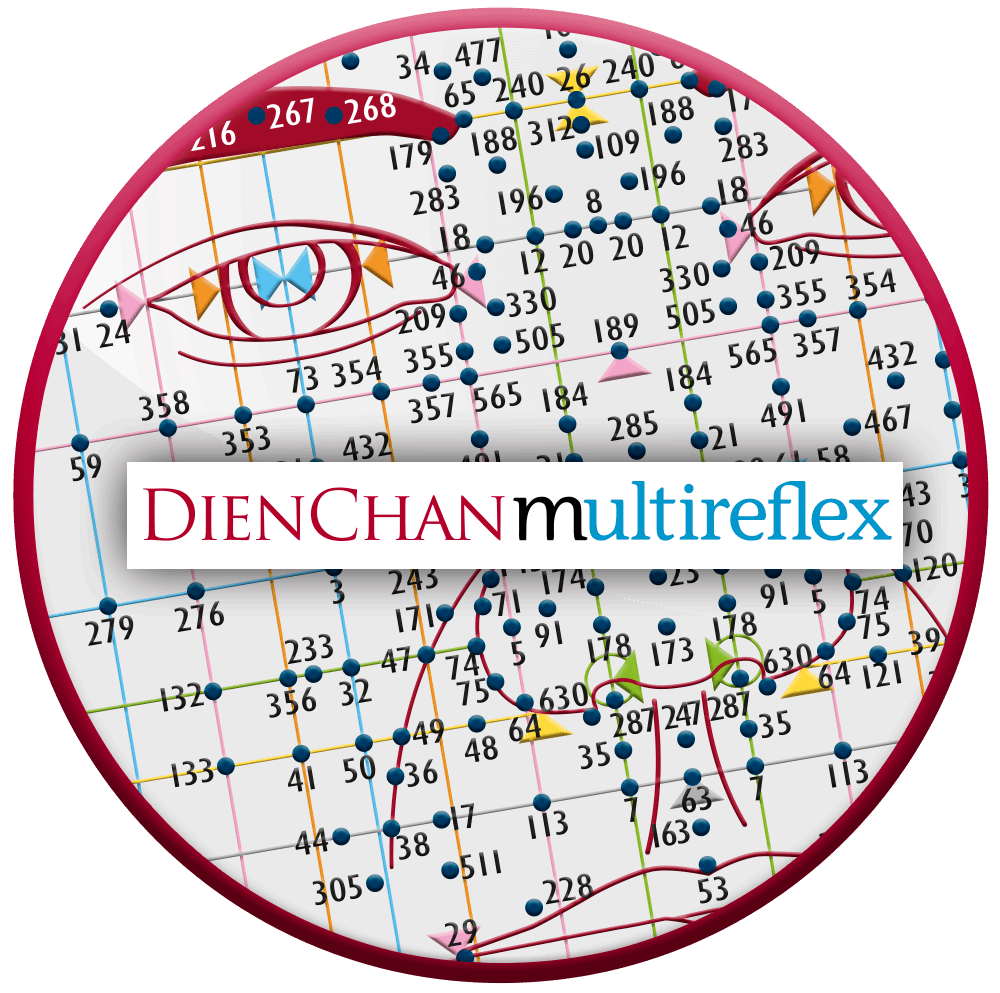Constipation: yin or yang?
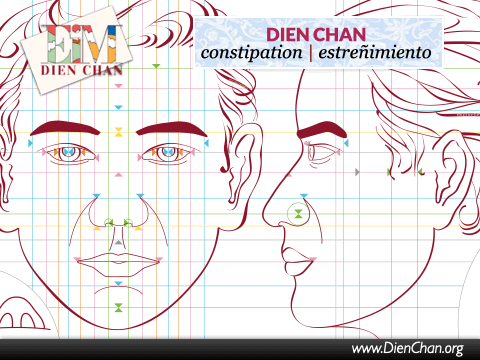
Learn how to distinguish between yin and yang constipation. To structure a personalised care plan, we need to be able to differentiate between the two types of constipation. This means they may be symptoms of very different dysfunctions.
Even though we may not like to talk about our bowel movements, it is a recurring topic for our clients.
So, before making them drink like hippos… let’s take a moment to ask the right questions!
Having regular bowel movements is a fundamental daily need. However, we observe that far too many women and elderly people suffer from chronic constipation.
Let’s not overcomplicate things or get lost in explanations borrowed from Western medicine, which does not distinguish between yin constipation and its yang counterpart.
Laxatives only provide temporary relief in emergencies and damage the intestinal flora without addressing the root cause.
It is much more effective to approach the situation holistically. Let’s build a personalised care plan.
With the first step of our care plan, we will be able to identify the possible causes.
While addressing the individual’s overall condition, we engage in dialogue and begin by “translating” the information gathered through subtle questioning.
1| For the first step (stress, fatigue, etc.), I refer you to the blog articles that detail care plans for numerous examples.
› You can also watch the video where Hélène Alvanitakis and I explain the care plan in Dien Chan: https://youtu.be/Yb3z6HTDB1U
… but let’s get back to our sheep droppings!
Our initial interpretation has led us to one of the following two paths:
The yin causes
Often caused by a weakened microbiota:
- Emotional: obsessions and anxiety (the spleen)…
- Blood stagnation (weak Qi).
- Dietary: lack of fats, cold food
- Parasites: amoebas, etc.
- Their symptoms:
- Lack of strength
- Feeling cold
- Pale face
To avoid:
- Laxatives, as they destroy the intestinal flora and weaken the gut.
- Cold food and raw vegetables.
- Excessive water intake.
2| Bodywork step
Regarding constipation, it is rare that we use abdominal stimulations during a consultation. However, it is highly recommended to show the person how to “roll” their abdomen using the most appropriate tool.
❉ If you are convinced their constipation is yin, suggest the Double yang ball nº410 for their at-home practice.
However, we will revisit this topic during the “prescription” step of our care plan.
3| The facial step
It involves selecting a yang multireflex tool, such as the Double mini yang ball nº307 or the Detector yang ball nº103.

This is the reflex diagram of internal organs on the face, which shows the path of the large intestine around the mouth.
Since we are dealing with yin constipation, we will follow the natural path of the intestine using the yang tool. This means going from right to left, then descending towards the chin.
The ideal is to perform small back-and-forth movements while respecting the direction, as if scratching a lottery ticket. Be careful!! Always make elegant movements, without damaging the skin.
The yang effect of the instrument is sufficient, as it stimulates peristaltic movements and restores energy to the circulation (blood and Qi).
› Stimulate yang in this manner at least five times.
4| Consolidation
This is where the bqc·points reveal their full power. By preparing the person holistically, addressing their general condition (the essential first step), and stimulating the reflex zones, we now have an extremely receptive brain.
Since we are dealing with constipation with yin symptoms, we will activate the bqc·points included in this proposal, moving from the chin upwards to the forehead:
Formula: 365· 44· 235· 63· 19· 1· 290· 39· 38· 3– 342· 300+ 126·
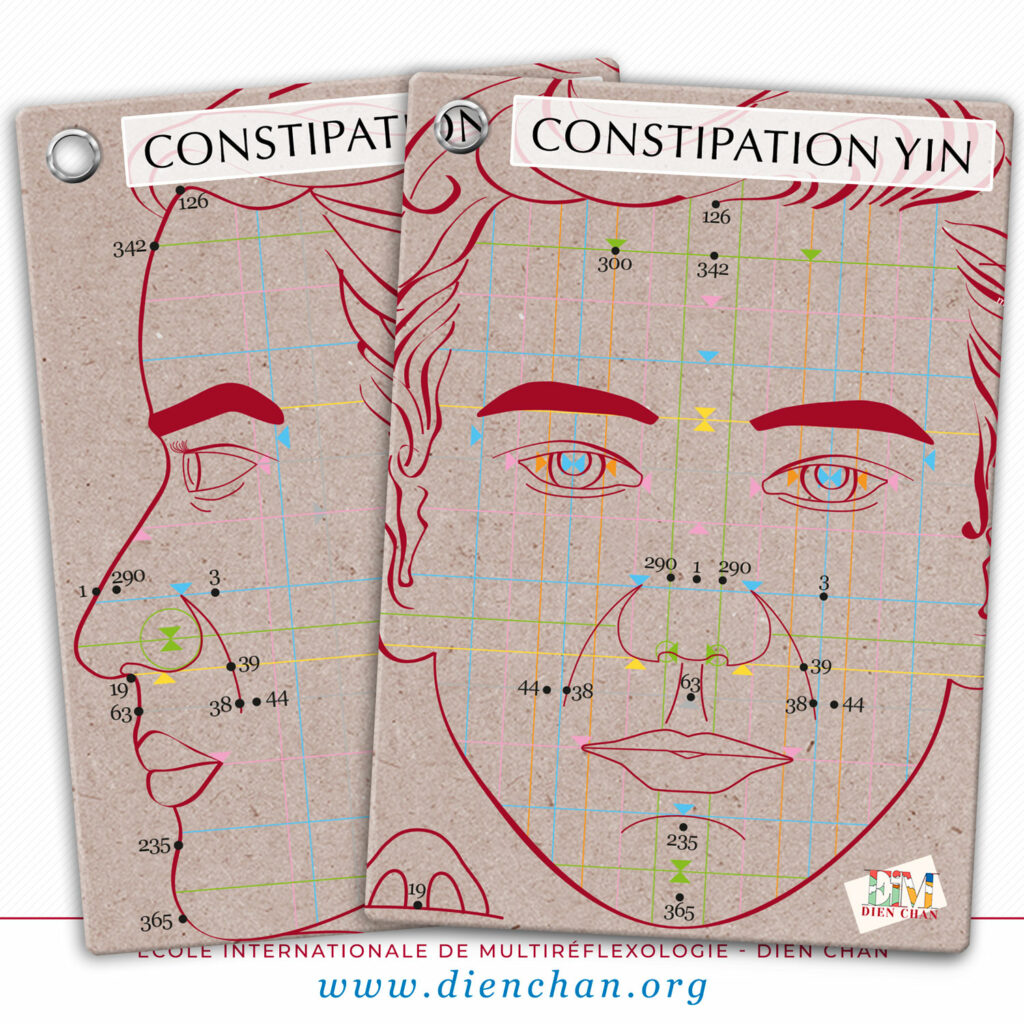
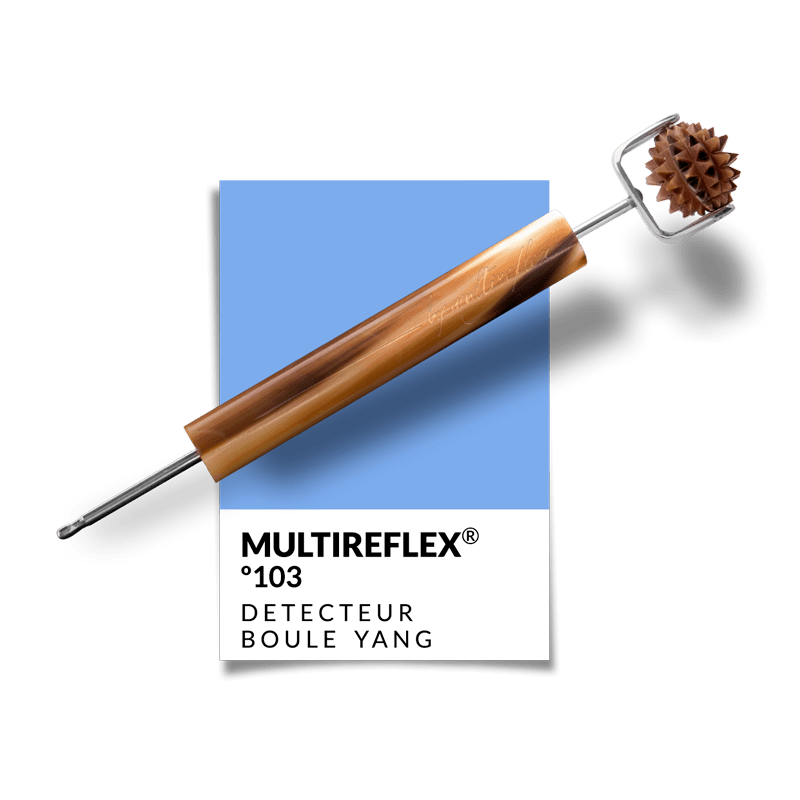
This article is designed to help those who have already studied Dien Chan. You can find the reasoning behind these points·bqc by selecting each one in the Dien Chan app named Faceasit (+info here).
kit❜reflex Yin Constipation
Yang causes
These are the most common as they involve internal overheating:
- Emotional: repressed anger (the liver), unexpressed frustration (the gallbladder)…
- Dietary: lack of water, insufficient fibre, excess animal protein…
- Their symptoms:
- Bad breath
- Bloating and dry stools
- Facial redness
- Poor stress management
To avoid:
- Spicy foods, alcohol, and hot dishes
- Excess fats and starchy foods
2| Body step
As mentioned earlier, we recommend showing the patient how to “roll” their abdomen using the most suitable tool.
— If you think the condition is yang, then the Double yin ball nº411 will be the most appropriate.
Check the “prescription” step of our care plan for additional tips.
3| Facial step
This step involves choosing a yang multireflex tool such as the Double mini yin roller nº308 or the Yin-yang roller nº206.
Once again, the facial reflex diagram of internal organs guides us to follow the large intestine’s path around the mouth. Using the yin tool, we move naturally from right to left, descending downward.
› “Trace” this path with an elegant and light motion.
The yin effect of your tool will normalise endogenous hydration and disperse blockages.
› Perform this yin work at least 10 times.
4| Consolidation
Our consultant is now ready to receive a regulatory formula.
Since our aim is to stimulate internal movements, we will activate the bqc·points from the top of the forehead downwards:
ƒ 126· 3– 37· 143· 50· 41· 38· 44· 87·
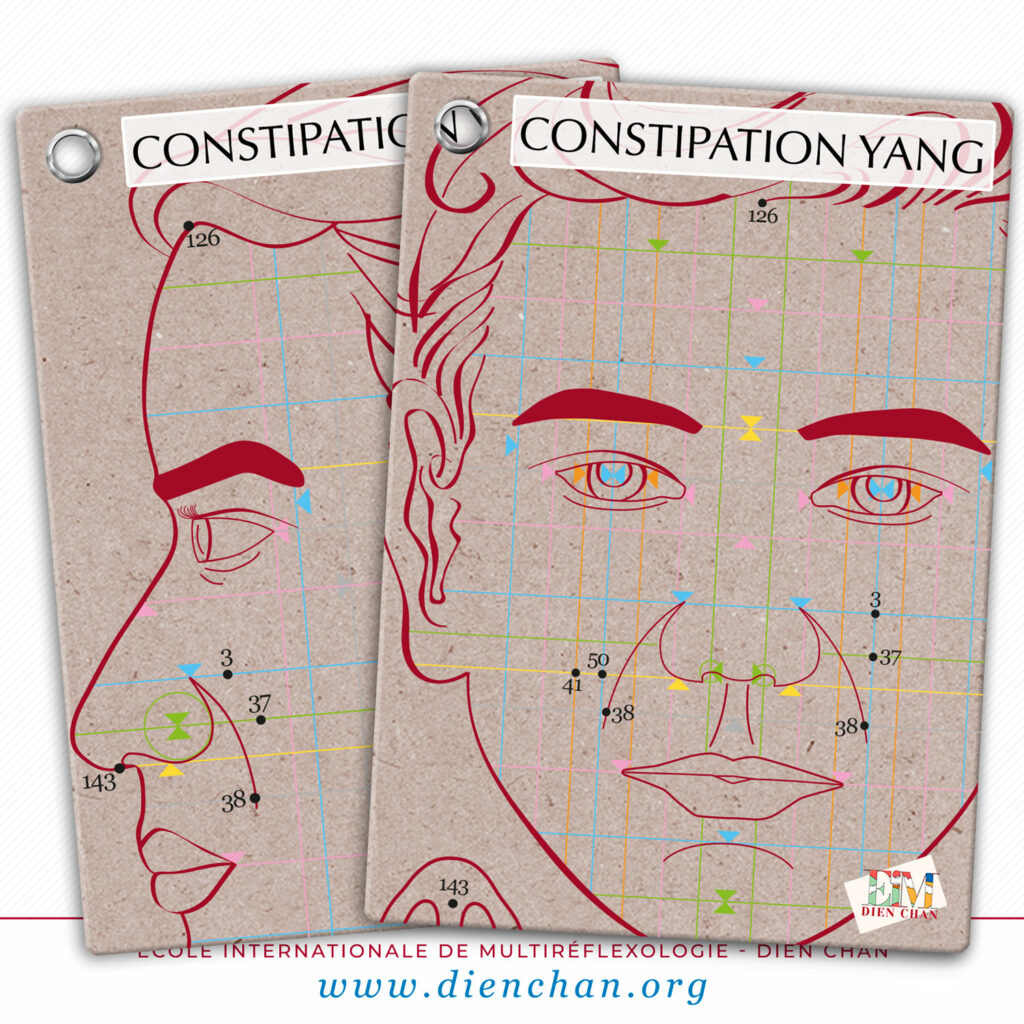
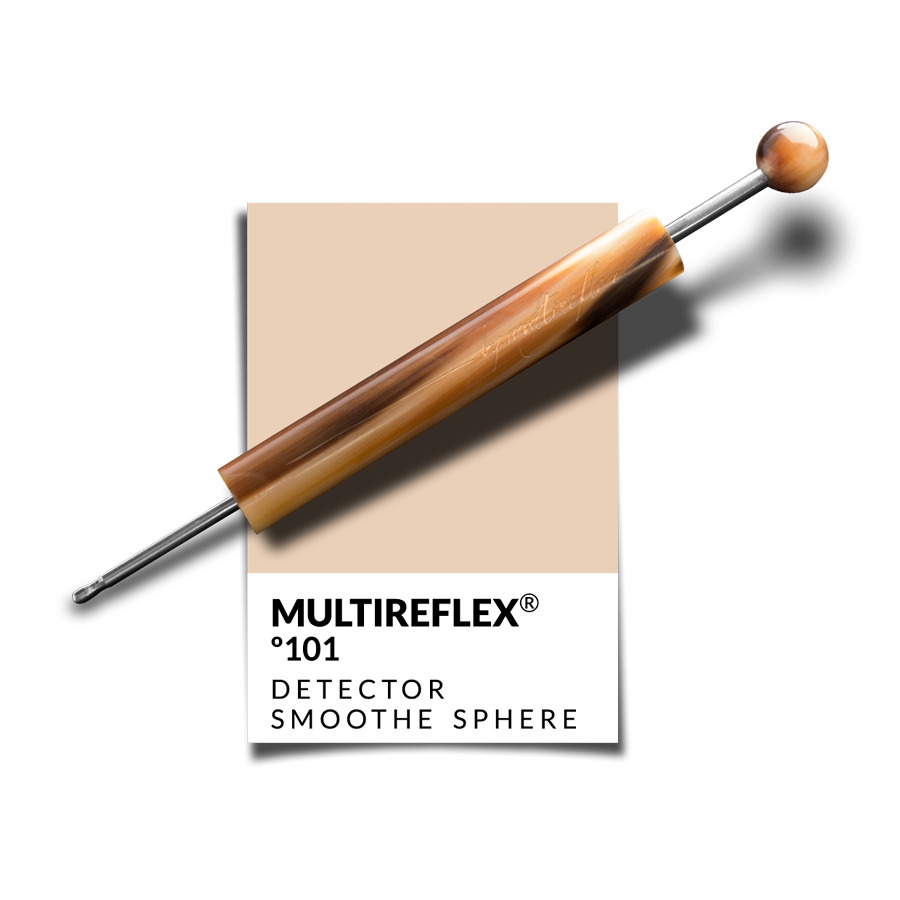
This article is primarily intended for our students who have learned how to break down formulas. However, you can access detailed cards for each point·bqc by tapping on them in the Dien Chan app called Faceasit (+info here).
kit❜reflex Yang constipation
Conclusion
Regardless of the type of constipation to be treated, you can enhance your care by testing the following bqc·points and integrating them into your formula:
- 399· and 561· to stimulate the energy of the Large Intestine meridian
- 348· if facing blockages at the exit (!!)
- 305· if you want to increase peristaltic movements
- 104+ if facing gas accumulation or inflammation of the intestine
⚠️ Avoid the bqc·point 19· if you suffer from high blood pressure.
—› To learn how to complete your Dien Chan formulas, I also invite you to read the blog article https://dienchan.blog/formules-points-dienchan
5| The prescription
As mentioned earlier, you can recommend a yin or yang multireflex body tool depending on the type of constipation.
—› Show the person how to massage the contour of the mouth (see animated image at the top of the article) at least every morning.
—› You can also suggest gentle abdominal massages with a tool that can be used both on the face and the body: the Beauty ova nº373 made of bamboo.
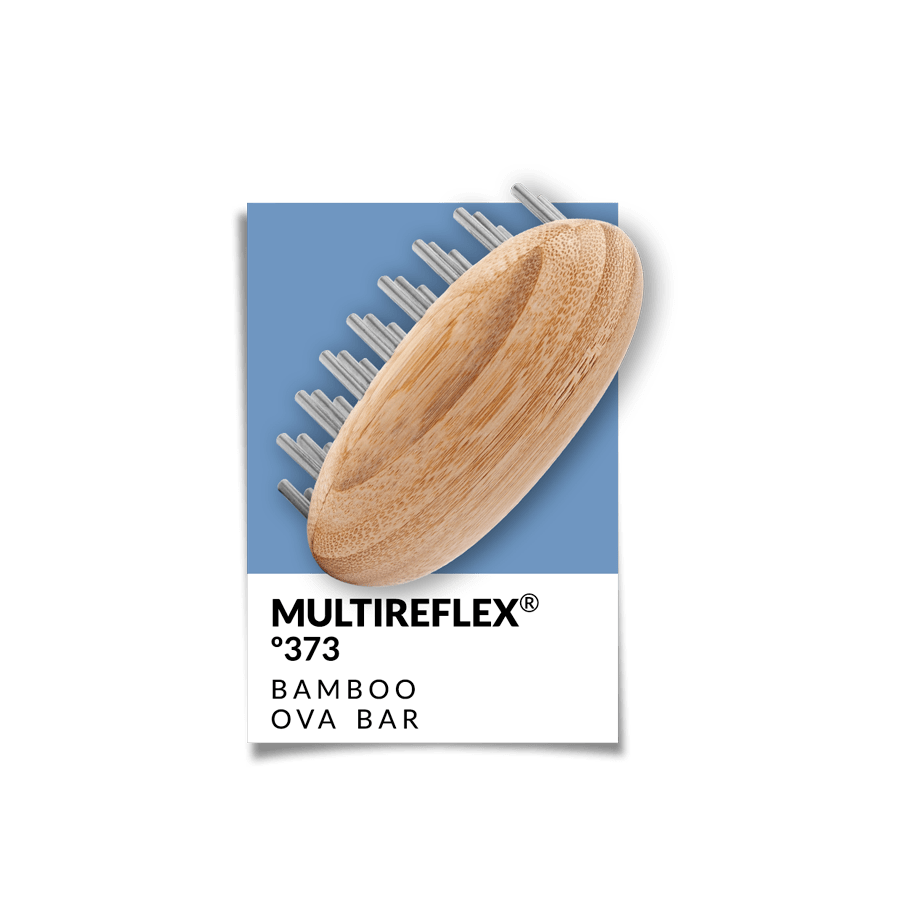
With the Beauty ova, your patient will be able to massage not only the abdomen but also the contour of the mouth (from right to left and towards the chin), every day upon waking up.
It will seem obvious to you that the person should be instructed to take their meals in peace, without brain overstimulation (put away their smartphone) and to chew well.
Dietary advice baskets are available online; among others:
- Foods rich in fibre (banana, figs, apricot, green vegetables…)
Prefer first cold-pressed olive oil (Spanish is better)
Choose chicory over coffee and organic apple juices. - Practice walking.
The kit❜pro
